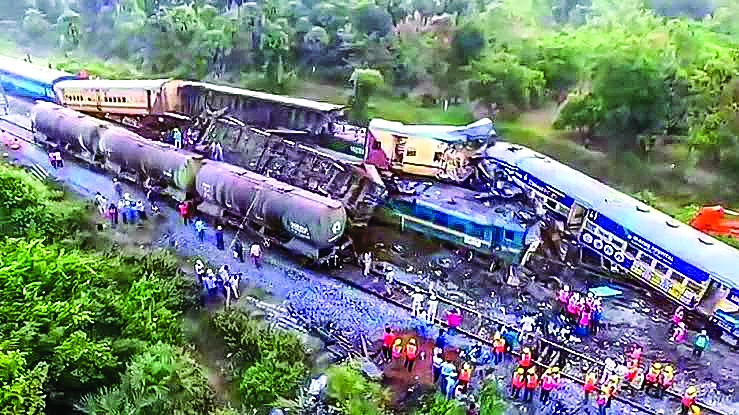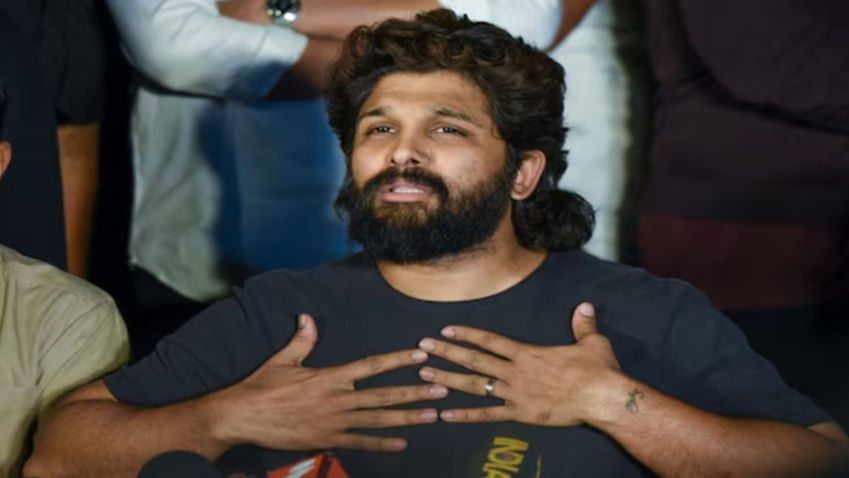List of fatal train accidents is endless. However, today we will deep dive into the some prominent incidents which grabbed the headlines and forced the railways to ponder for better safety mechanism of trains that run on the world’s largest rail network.
The train accident in West Bengal between Kanchanjungha Express and a goods train gave shiver down the spine of millions across the country and the incident adds to a grim list of train disasters in India’s history. The most recent, in 2023, claimed over 300 lives in a triple train crash. Other notable incidents include the 2016 Indore-Patna Express derailment that killed 146 and the 1999 Gaisal collision that resulted in 285 deaths.
One of the deadliest train accidents in Indian history occurred in Firozabad in 1995, where a collision between two trains claimed over 350 lives. This incident stands as a stark reminder of the devastating consequences of railway accidents, highlighting the need for stringent safety measures and modernization efforts.
Similarly, the Gaisal train disaster in 1999 shocked the nation when two trains collided in Assam, resulting in over 290 fatalities. Investigations revealed a combination of human error and communication failures as contributing factors, prompting calls for improved signaling systems and training protocols.
Railway accidents may be classified by their effects (e.g.: head-on collisions, rear-end collisions, side collisions, derailments, fires, explosions, etc.), or by cause (e.g.: driver and signalman error; mechanical failure of rolling stock, tracks and bridges; vandalism, sabotage and terrorism; level crossing misuse and trespassing; natural causes such as flooding and fog; hazards of dangerous goods carried; effectiveness of brakes; and adequacy of operating rules).
List of such accidents is endless. However, today we will deep dive into the some prominent incidents which grabbed the headlines and forced the railways to ponder for better safety mechanism of trains that run on the world’s largest rail network.
1954: On 28 September, a train travelling between Madras and New Delhi derailed after the collapse of a bridge, leaving at least 137 people dead and 100 injured. Earlier the same year, a passenger train derailed while crossing a bridge near Bhatinda, killing at least 15 people and injuring 40 on 4 January 1954. On 31 March 1954, explosives being transported on a passenger train detonated near Gorakhpur, killing 31 and injuring 32. Also on 15 September 1954, a train crashed into a truck carrying students at a crossing 130 km (80 mi) north of New Delhi, killing 10 and injuring 18. On 27 September 1954, derailment of 319 Down Express at a girder bridge between Jangaon and Raghunathpalli stations, resulting in the deaths of 136 people.
1956: On 23 November, a train plunged into the Marudyar river after a bridge was destroyed by flooding, leaving at least 154 dead and 115 injured. The 1956 Ariyalur train accident was a train accident on 23 November 1956 in Ariyalur, Tamil Nadu, India, where a train fell into the Marudaiyaru River, killing over 150 passengers after a bridge collapsed as a result of damage by torrential rain. It was until then the worst train accident ever in independent India and is still one of the country’s deadliest train disasters. The accident came 2.5 months after the 1956 Mahbubnagar train accident, a similar accident in Mahbubnagar.
1981: More than 800 people were killed in India’s deadliest rail accident on 6 June when a train derailed in Bihar and plunged into the river below. On 12 February 1981, a freight train, the No.20 Madras Mail from Trivandrum Central Trivandrum Mail, and the Yercaud Express collided in Vaniyambadi, 200 km (120 mi) from Chennai. On 16 July 1981, a freight train collided with the back of a Narmada Express in Madhya Pradesh, between Khodri and Bhanwar Tonk station, killing 50 people and injuring 49.
On 19 July 1981, a train travelling to Ahmedabad from New Delhi derailed in Gujarat, killing 30 people and injuring 70.
1984: The Jabalpur-Gondia passenger mishap occurred when a passenger train sank in river near Charegaon, Balaghat, Madhya Pradesh, killing over 150 people on 15 September 1984.
1985: Two trains viz The New Delhi-bound Tinsukia Mail passenger train and a freight train collided in the eastern state of West Bengal, at Dhupguri railroad station, about 750 miles east of New Delhi killing at least one person and injuring more than 300 others, seven seriously. Three to Five cars of the passenger train derailed in the accident on 22 November 1985.
1987: The Machieral rail disaster involved the derailment of the Delhi-Dakshin Express at Macherial, Andhra Pradesh, killing 53 people on 8 July 1987. In the same year on 15 March, Rockfort Express (Chennai–Tiruchi) plunged into a dry riverbed when a bomb exploded on a bridge over the Marudaiyar, near Ariyalur. 25 people were killed and several others were injured.
1995: More than 300 died and 344 were injured on 20 August in a collision between two trains at Ferozabad, near Agra. On 14 May 1995 – The Madras–Kanyakumari Express collided head-on with a freight train near Salem, killing 52. On 1 June 1995 – The Jammu Tawi Express from Kolkata collided with a stationary coal-laden goods train, killing 45 and injuring 335.
1998: At least 210 people were killed when the Sealdah Express collided with a derailed train in Punjab. On 24 April 1998, 15 cars of a freight train collided with the Manmad–Kachiguda Express at Parli Vaijanath railway station in Maharashtra, killing 24 and injuring 32. On 13 August 1998, the Chennai–Madurai Express train collided with a bus at an unmanned level-crossing on the new Karur-Salem bypass road on the outskirts of Karur town, killing 19 and injuring 27.
1999: On 2 August, 285 people were killed and 312 injured in a collision between two trains in Gaisal, West Bengal. On 16 July 1999 – The 2616 UP Chennai–New Delhi Grand Trunk Express collided with derailed cars of a DN freight train on the Agra-Mathura section of the Central Railway, killing 17 and injuring over 200. On 2 August 1999 – The Gaisal train disaster occurred when the Brahmaputra Mail collided into the stationary Avadh Assam Express at Gaisal station in North Frontier Railway’s Katihar division, killing at least 285 and injuring more than 300.
2010: On 28 May, a train derailed and crashed into a freight train about 83 miles west of Kolkata in Bengal, killing 146 and injuring over 200. Authorities blamed Maoist rebels for sabotage.
2006: Attacks by terrorists on trains and stations in Mumbai left 186 dead and 700 wounded on 11 July. India blamed Pakistani intelligence and Lashkar-e-Taiba.
2002: The luxury Rajdhani Express from Calcutta to New Delhi plunged into the swollen Dhabi river, killing at least 120 people. Railway authorities cited sabotage for the crash.
2016: At least 146 people died when an Indore-Patna Express train derailed in Uttar Pradesh on 20 November, causing carriages to crash into each other.
2023: Coromandel Express hit a goods train in Balasore after hitting Bengaluru-Howrah Superfast Express, resulting in a tragic triple train crash. Over 300 people were killed, and well over 1,000 were injured. On 2 June 2023 – 2023 Odisha train collision: Train 12841 Coromandel Express running at 128 km/h (80 mph) collides with a freight train (goods train) loaded with iron ore in Odisha’s Balasore district. The accident happened around 19:30 IST near Bahanaga Bazar station when the train was on the way to MGR Chennai Central from Shalimar railway station near Kolkata. More than 20 coaches were derailed. 12864 SMVT Bengaluru–Howrah SF Express travelling towards Howrah passed in the opposite line just seconds before at 130 km/h (81 mph). However, the derailed coaches of the Coromandel Express smashed into the last few coaches of the SMVT Bengaluru-Howrah SF Express before it could completely pass through that section. A total of three trains were involved.







